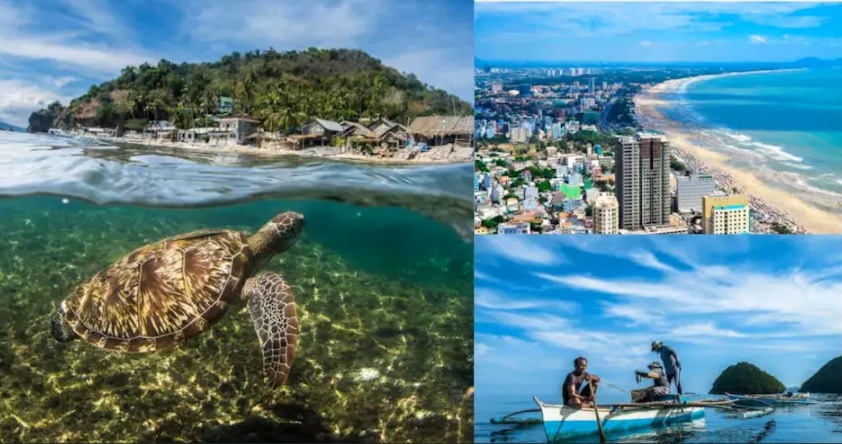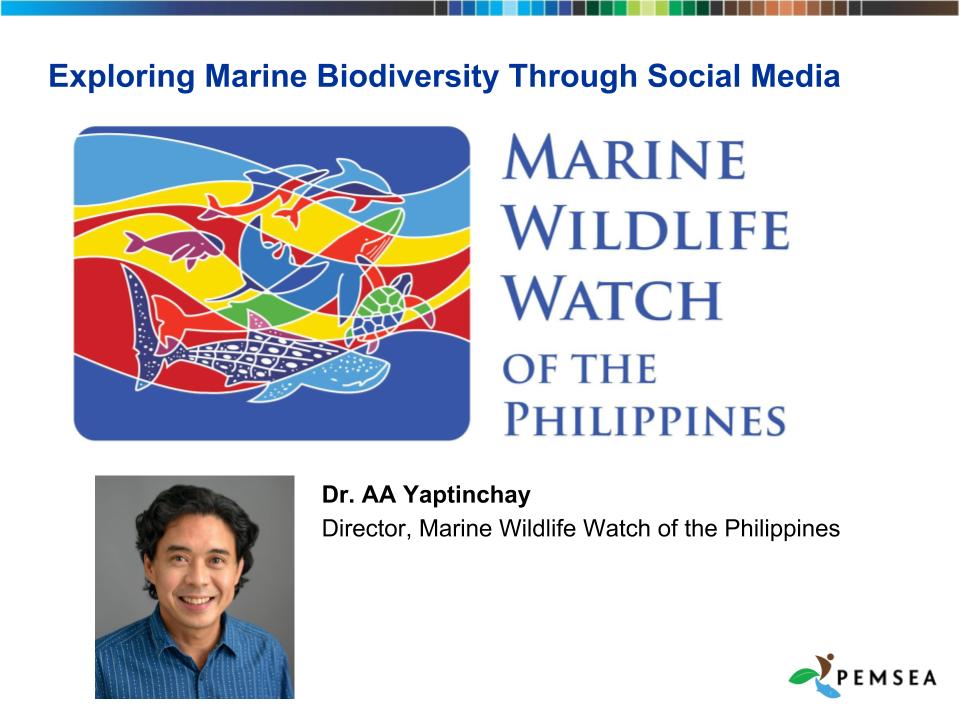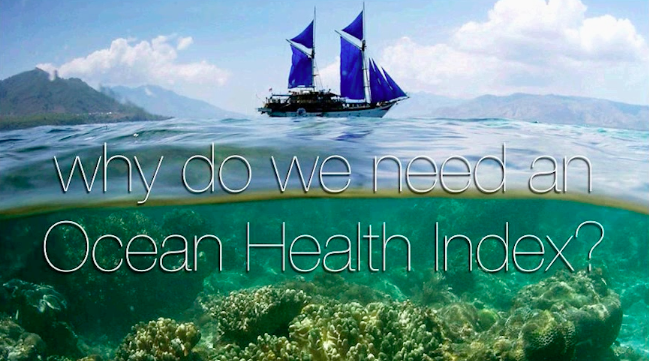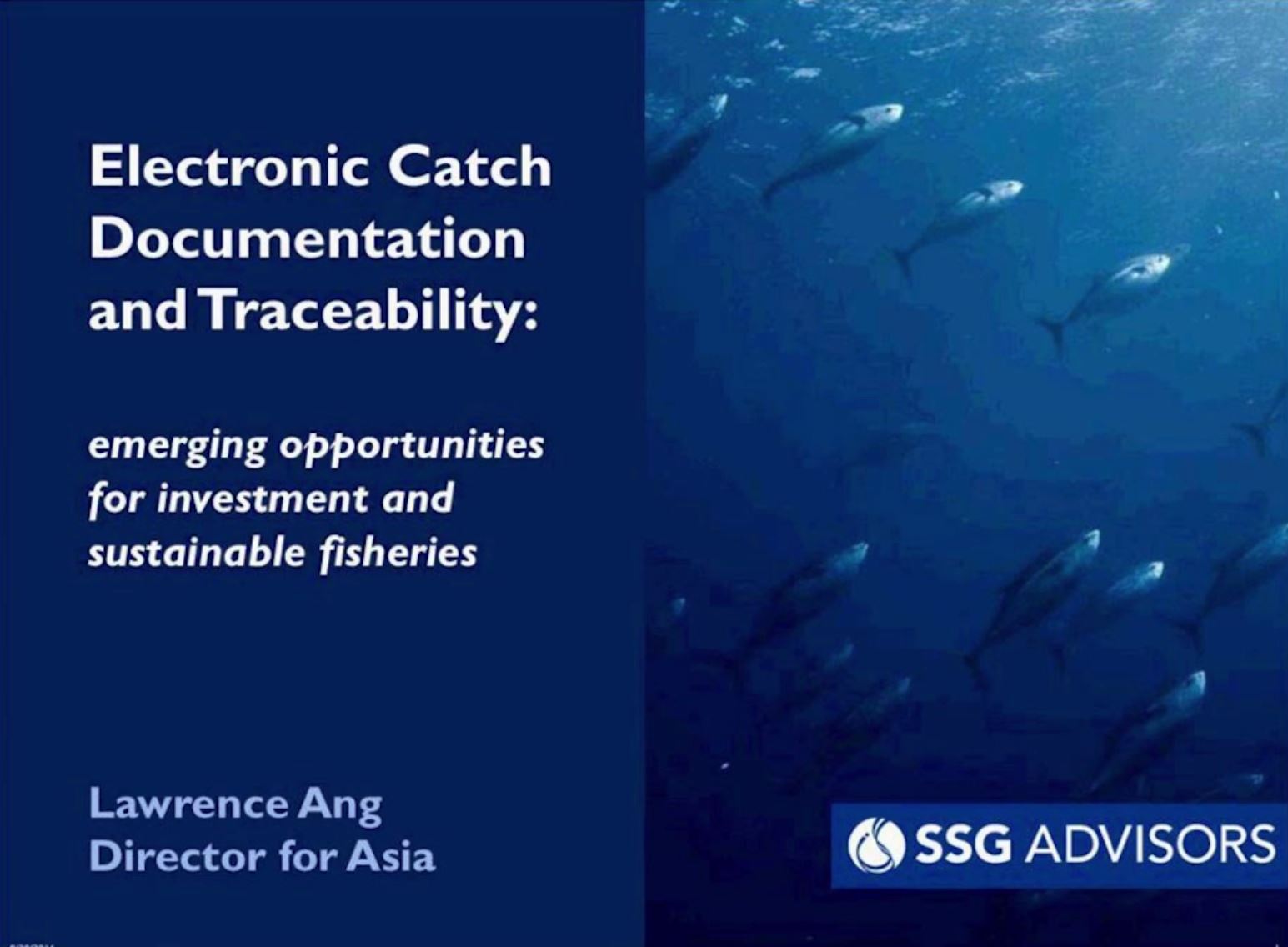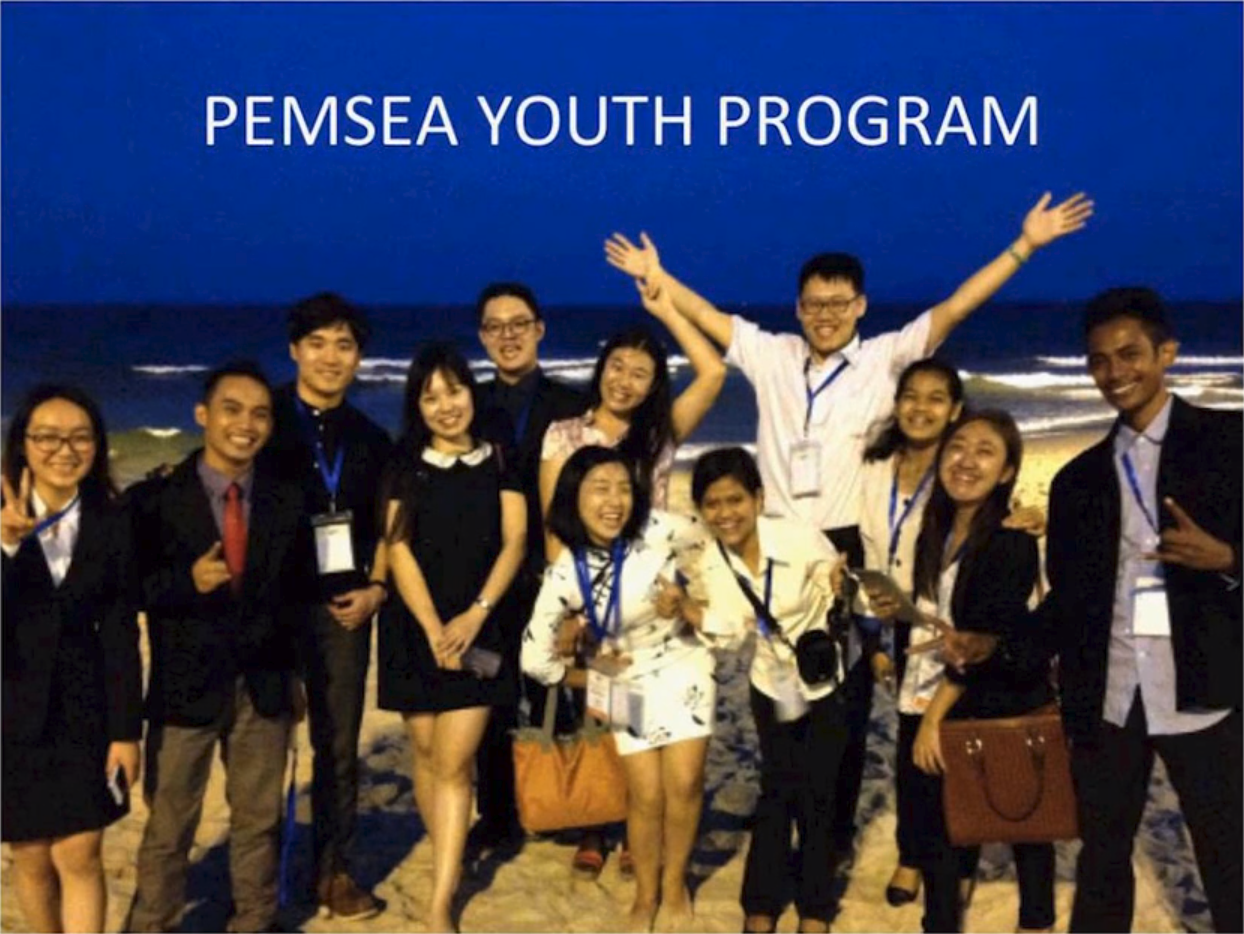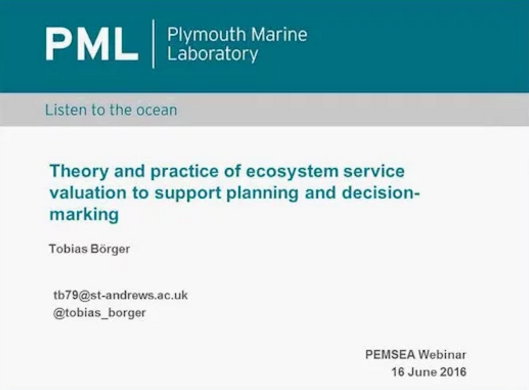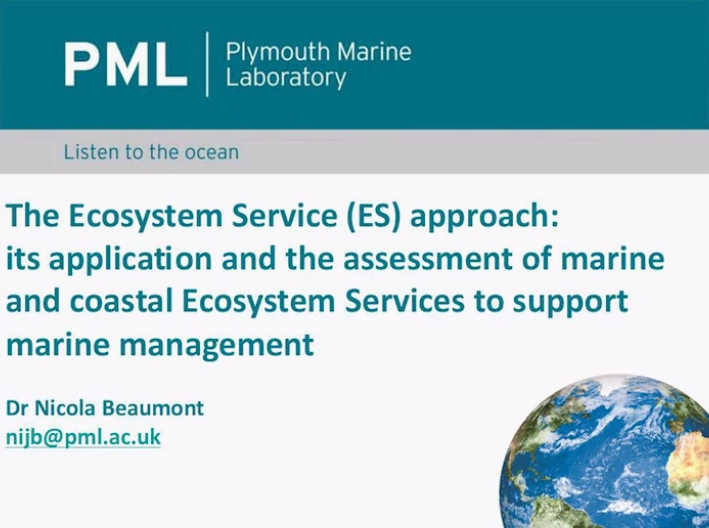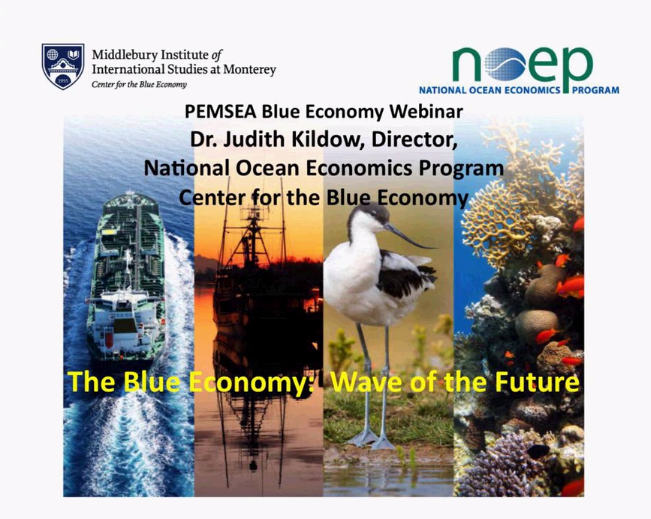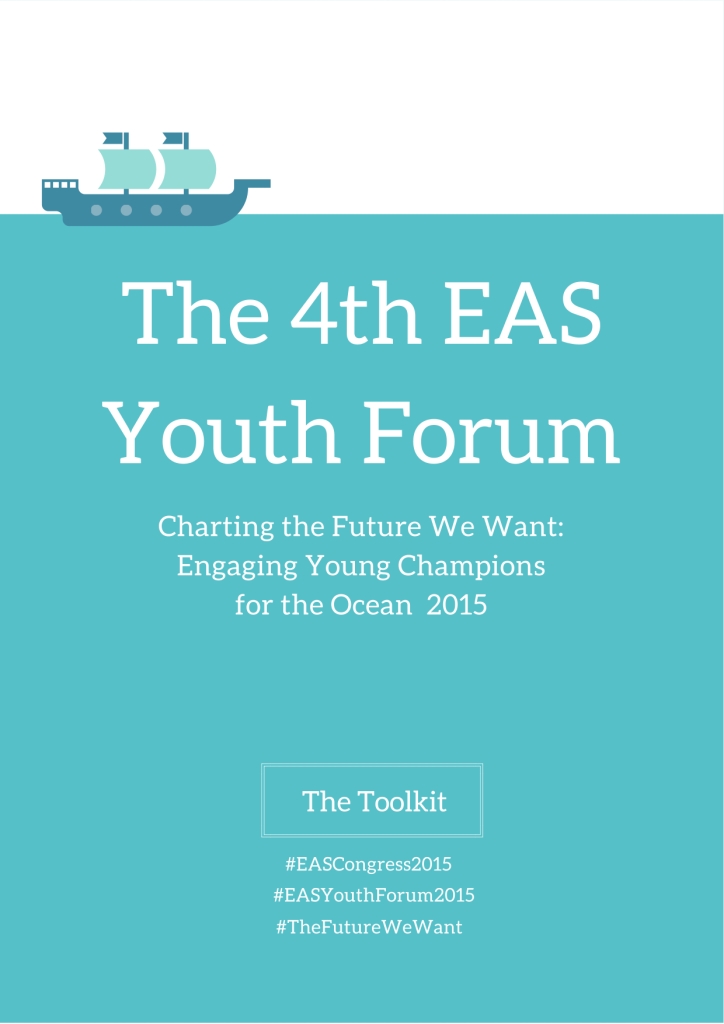
Breadcrumb
-
Webinar on the PEMSEA Youth Program
Learn about PEMSEA's Youth Program, including an exciting opportunity to develop your own local project supporting ocean health. Learn about:
- The PEMSEA Youth Grant Competition for funding a local youth project
- Professional development through learning events
- Regional participation through the East Asian Seas (EAS) Youth Forum
-
Webinar: Exploring Marine Biodiversity Through Social Media
Understand how to optimize social media for the conservation of our marine environment.
- What is the role of social media in marine biodiversity?
- How can I use my social media accounts to contribute to solutions for protecting marine biodiversity?Social media has brought in new ways of documenting marine biodiversity. With proper documentation and reporting, technology has enabled anyone with internet access to become an agent of science. Marine Wildlife Watch of the Philippines' Facebook page has become a hub for reporting large marine vertebrate incidents in the Philippines. Exploring marine biodiversity through social media has provided insights on what lies beneath the waves as well as looming threats to our marine wildlife and their habitats.
-
Blue Economy Webinar Series: Measuring Ocean Health for Sustainability
Learn about how the health of our oceans is being measured.
- What is the Ocean Health Index (OHI)?
- Key elements of the OHI framework
- What are the practical uses of the OHI framework?
-
Webinar on Electronic Catch Documentation and Traceability
Learn about the latest developments in electronic catch documentation and traceability (CDT) systems for sustainable fisheries.
- What is CDT and why now?
- How CDT works
- Emerging business models and investment opportunities for CDT
The USAID Oceans Project supports the development of a transparent and financially sustainable electronic catch documentation and traceability (CDT) system, to help ensure that fisheries resources from Southeast Asia are legally caught and properly labeled. The electronic CDT system will encourage the collection and analysis of ecological and economic data related to seafood products throughout the supply chain, traceable from point-of-harvest to seafood importer retail. While CDT cannot replace national enforcement needs for effective fisheries monitoring, control, and surveillance (MCS), CDT remains one of the most valuable and comprehensive methods for collecting fisheries statistics that can be gathered at a reasonable cost. Catch documentation at point-of-harvest can also be valuable for stock assessment purposes and marine spatial planning efforts.
-
Youth Webinar: Understanding Integrated Coastal Management
Integrated Coastal Management (ICM) has been applied throughout East Asia, a region with over 1.5 billion coastal residents, for over 20 years, benefitting tens of millions of people. But the concept of ICM may still be new to some. What is ICM and what are its impacts? Watch this webinar to learn from Dr. Jessica YE Guanqiong, Assistant Professor at Zhejiang University and leader in coastal management about how ICM is implemented in the real world and its impacts on coasts & oceans!
- What is Integrated Coastal Management?
- Key elements of ICM implementation
- Case study on Xiamen, Quanzhou and Dongying, China: before and after ICM
- Impacts and results of ICM
-
The Theory and Practice of Ecosystem Service Evaluation
Watch this FREE webinar to learn from Dr. Tobias Börger on the valuation of marine and coastal ecosystem services. PEMSEA's webinar series, together with its partner, Plymouth Marine Laboratory (PML), aims to share knowledge about ecosystem services valuation and its application at the local level.
The increasing use of the coastal and marine environment requires better spatial planning and coordination of human activities in these environments. Different activities such as fishing and aquaculture, recreation and tourism, oil and gas extraction, energy generation and shipping produce different economic costs and profits and at the same time have different impacts on marine and coastal ecosystems. Taking into account all such impacts and making them comparable on one scale is the objective of economic valuation of ecosystem services and their benefits. This webinar course will touch upon the theory of economic valuation approaches and the need for valuation of these outside of the market. The concept of value in economics and different value motivations in the framework of total economic value (TEV) will be discussed. The idea of environmental cost-benefit analysis to support decision-making and planning will be introduced. The webinar will then give an overview of relevant methods, both revealed and stated preferences approaches. Revealed preference methods include the use of market prices, the production function approach, hedonic pricing and the travel cost method. Stated preference methods are contingent valuation and discrete choice experiments. Some of these methods will be illustrated by exemplary applications in the coastal and marine environment to support planning and decision-making.
-
Webinar on the Ecosystem Services Approach
Watch this FREE webinar to hear from Dr. Nicola Beaumont on the valuation of marine and coastal ecosystem services. PEMSEA's webinar series, together with its partner, Plymouth Marine Laboratory (PML), aims to share knowledge about ecosystem services valuation and its application at the local level.
The term “Ecosystem Services” is increasingly used throughout the domains of both academia and management. However, it is easy to lose sight of both the meaning and purpose of this term. This webinar aims to clarify the cutting edge thinking on what Marine and Coastal Ecosystem Services are, and to provide the most recent examples of their application. To provide context the origins and evolution of the ecosystem service approach will be presented, from its early definition in the Millennium Ecosystem Assessment, through its re-classifications and conceptual developments (including TEEB, CICES and NEA), to conclude with an analytical overview of the most recent marine ecosystem services classifications. The benefits and barriers of applying the Ecosystem Service approach in a practical management context will then be examined, including a broad range of real world case study examples. In line with the current growth in research and policy demands a focus on the spatial mapping of ecosystem services, and their use in marine spatial planning will be provided. Both successes and failures in assessment and application will be explored, and from these future recommendations will be reviewed.
-
Webinar on the Blue Economy: Making Waves in a Gathering Storm
Watch this one-hour webinar to hear from leading experts, Judith Kildow and Maricor Ebarvia, discuss the latest research and thinking on the concept of “blue economy”:
- What is blue economy and how can it address the multiple challenges and opportunities in coastal and marine areas related to water, food, energy, climate, economy and society
- Global efforts to assess and report on blue economy in concrete, consistent economic terms
- Why businesses should pay attention to the emerging blue economy trend
- Development of a State of Oceans and Coasts (SOC) reporting system for the East Asian Seas region
-
The 4th EAS Youth Forum. Charting the Future We Want : Engaging Young Champions for the Ocean 2015. The Toolkit
The EAS Youth Forum Toolkit served as a guide for the youth participants during the East Asian Seas (EAS) Congress 2015. It contains useful information on the activities for the youth, as well as details about the speakers and presentations at the 4th Youth Forum.
